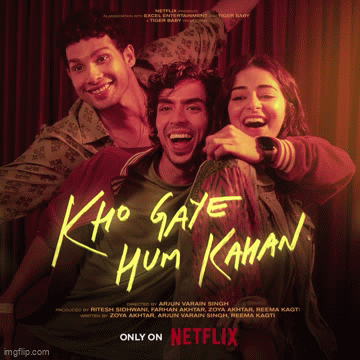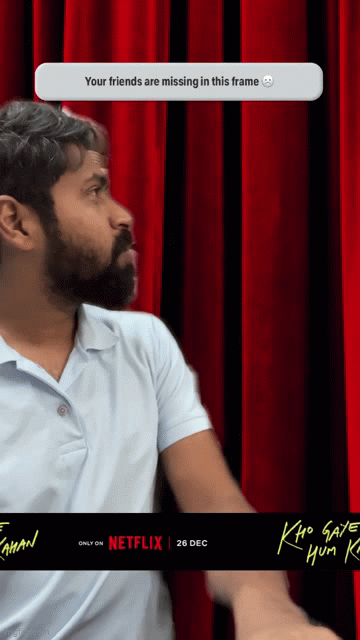Crafting Connection: Storytelling to Shape Modern Web Experiences
- jessicaongko0
- Nov 9, 2024
- 5 min read
Updated: Nov 18, 2024
By Nikita D’souza, Kulfi Collective
In 2017, the world watched in horror, when Daenerys’s dragon, slain by the Night King, opened one piercing blue eye.

We collectively gasped at Thanos’ snap of ‘disintegration’ in 2018.
Last year, Kendall Roy’s crushing realization that he would not take over his father’s empire had us stunned (and devastated, if you were Team Kendall).
Think about the last time you got hooked on a movie or TV series—whether it was Game of Thrones or Succession. Beyond the epic battles, complex characters, or stunning CGI, it’s the story that pulls you in, keeps you engaged, and makes you emotionally invested.
The same is true for modern web experiences. Whether it's a brand sharing its narrative through social media or a product connecting with its audience through immersive campaigns, storytelling is what ties the increasingly complex elements of the modern web experience together.
Brands Aren’t Just Competing for Attention—They’re Competing for Connection
Audiences do not want to watch ads; they want to experience the brand’s narrative, engage with its story, and feel like they’re part of something bigger. Storytelling bridges the gap between consumer and brand (or in our case, agency and audience), making the interaction more personal, meaningful, and—hopefully—enjoyable.
So to enhance an audience’s connection to a brand, agencies must weave technology into the narrative and turn storytelling into an immersive, multi-sensory experience that resonates across devices and platforms. Instead of just static websites or linear video content, we should create living, breathing experiences that adapt and respond to user interactions.

Storytelling bridges the gap between consumer and brand, making the interaction more personal, meaningful, and—hopefully—enjoyable.
Building New Narratives Online
Crafting these dynamic, compelling stories requires a balance between creativity and strategy. Here are some key practices we’ve learned along the way:
Cross-Device Compatibility: Today’s audiences move seamlessly between smartphones, tablets, and desktops. Your story needs to do the same. Whether through adaptive web design or mobile-friendly content, your narrative must work across devices without losing its impact.
Interactive Elements: Storytelling shouldn’t be passive. Make it interactive by incorporating quizzes, polls, games, (like the Stranger Things Mobile game where players had to fight their way through a pixelated Hawkins) or AR/VR elements to invite your audience to participate in the story. This interaction not only boosts engagement but also makes the experience more memorable.
Multi-Platform Storytelling: Don’t limit your story to just one platform. A narrative that starts on Instagram can continue on YouTube, build momentum on TikTok, and culminate in an immersive website experience. Think about how each platform contributes to the overall arc of the story and ensure consistency across all channels.
As technologies like AI and VR continue to evolve at the speed of light, the future of storytelling is limitless. AI, for example, is already helping brands create personalized web experiences based on user behavior. Tools like chatbots and recommendation engines allow brands to offer tailored content, enhancing the overall user journey. Imagine a world where AI not only recommends the next video to watch (any Moo Deng fans out there?), but actively shapes the story based on your interactions.
Meanwhile, VR is pushing the boundaries of immersion. Instead of just watching a story unfold, users can now step inside the narrative, interact with characters, and influence the plot in real time. This level of engagement takes storytelling to a whole new level, making it a fully participatory experience.
Storytelling Is No Longer Just About the Story
Today, storytelling is about leveraging the right technology to deliver that story in a way that feels personal, immersive, and engaging. As the line between the digital and physical world gets blurrier every day, there’s an enormous opportunity for agencies to push the boundaries of what’s possible in storytelling online.

As the line between the digital and physical world gets blurrier every day, there’s an enormous opportunity for agencies to push the boundaries of what’s possible in storytelling online.
We’re learning to embrace this challenge by constantly experimenting with new formats, platforms, and technologies. Whether it’s a friendship film like KGHK or a cutting-edge campaign for a tech brand, we believe that great storytelling, when paired with innovation, can create experiences that captivate—much like the un-dead Viserion when he opened his eye!
At the heart of it all, the power of storytelling remains the same: it’s what connects us.
And when done right, it’s what keeps audiences coming back for more.
The Case Study: Kho Gaye Hum Kahan
At Kulfi Collective, we’ve seen firsthand how blending storytelling with cutting-edge tech can drive success. Take our campaign for the Netflix original film Kho Gaye Hum Kahan (KGHK), for example. The coming-of-age film was to be marketed as the ‘definitive friendship film for Gen Z,’ and we needed a campaign that could engage this hyper-connected, fast-paced audience—so one that spanned multiple platforms and leveraged different forms of storytelling.
We identified key connections—friendship, music and media—the glue that binds our audience together and resonates with key attributes of the film, and then built an entire experience ahead of the film’s launch. This included:
Song Launch at the NH7 Music Festival: We got the cast on stage at popular music festival NH7 Weekender to release the title song in front of a crowd of over 25,000!
Immersive AR Murals: In an ode to the coming-of-age friends drama, we designed and created a mural in Mumbai. It embodied a celebration of timeless friendships depicted in iconic films from the Hindi film industry, but with a twist—it had an interactive, augmented reality (AR) element that brought the mural to life through users’ smartphones. The AR filter allowed characters of KGHK to appear alongside key characters from two other cult friendship films that resonated with different generations—Dil Chahta Hai and Zindagai Na Milega Dobara. This immersive experience, blending physical art with digital technology, reinforced KGHK’s position as THE friendship film for this generation, while its AR integration aligned with Gen Z's digital behaviors and platform preferences in a fun, engaging and culturally relevant way.
Interactive Microsite: In the theme of celebrating friendships, we also launched an interactive microsite where users could create personalized film posters by uploading photos of their crew. The site used AI to merge users’ faces with the film’s aesthetic, offering them a unique piece of content they could share on social media. The result? A deeply personal experience that aligned with KGHK’s core message of friendship and self-expression.
Influencer-Driven Content: Influencers played a major role in driving the campaign’s message home! We collaborated with popular Gen Z influencers who created vlog-style content, behind-the-scenes footage, and interactive games with the cast to engage their followers. The influencers and key cast members acted as ambassadors for the film, blending their personal stories with the larger narrative of the movie, further blurring the lines between reality and fiction.
This multi-channel, tech-driven approach allowed us to expand the story of KGHK beyond just the screen, creating a rich, immersive experience that engaged over 300 million users across multiple touchpoints!
ABOUT THE AUTHOR:

Nikita, AVP of Marketing Communications at Kulfi Collective, collaborates with founders and creative teams across its three verticals to strengthen the brand globally. With expertise in marketing strategy and a Master’s in Integrated Marketing Communications from Georgetown, she helps position Kulfi as a leading creative force.









